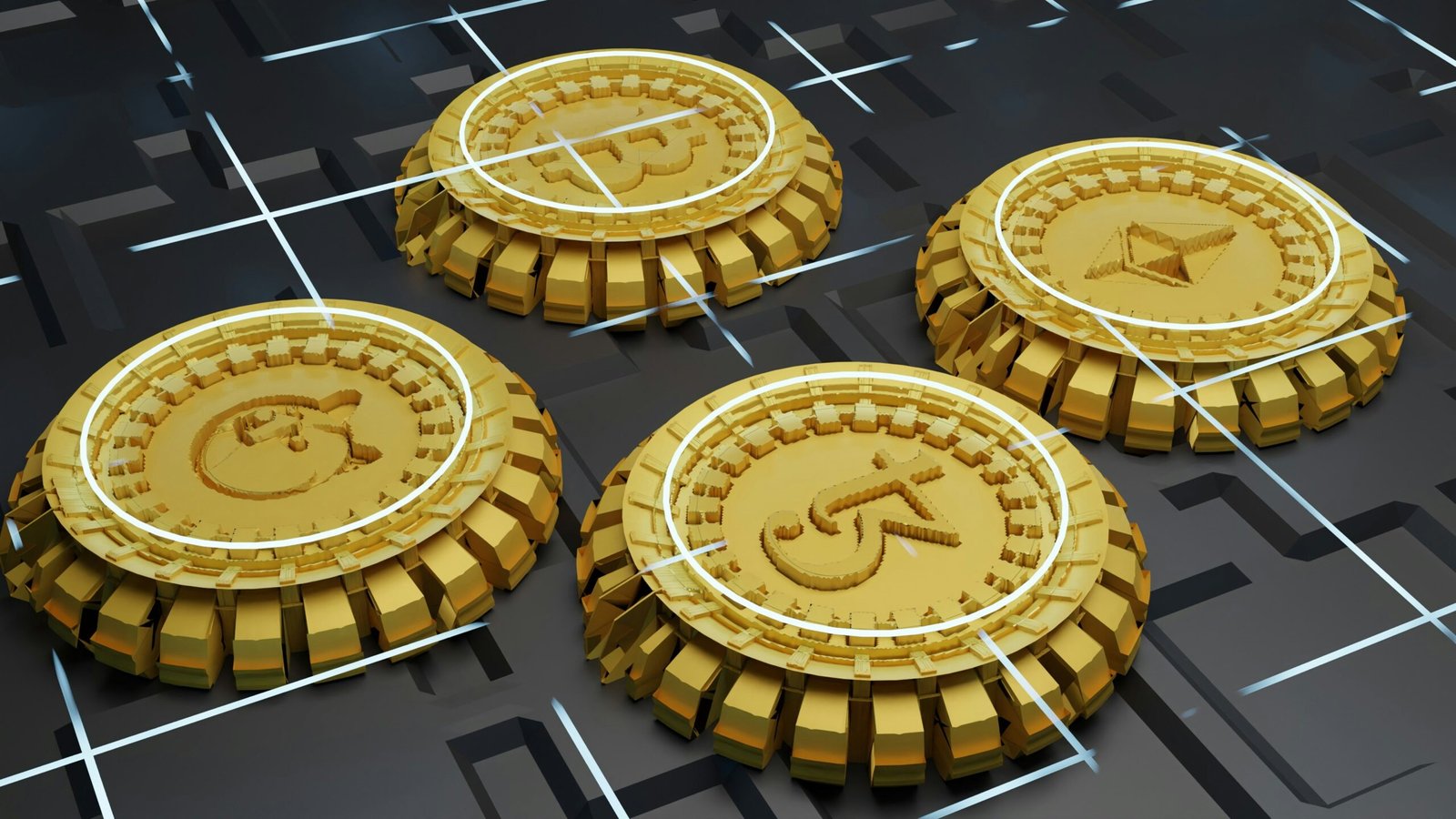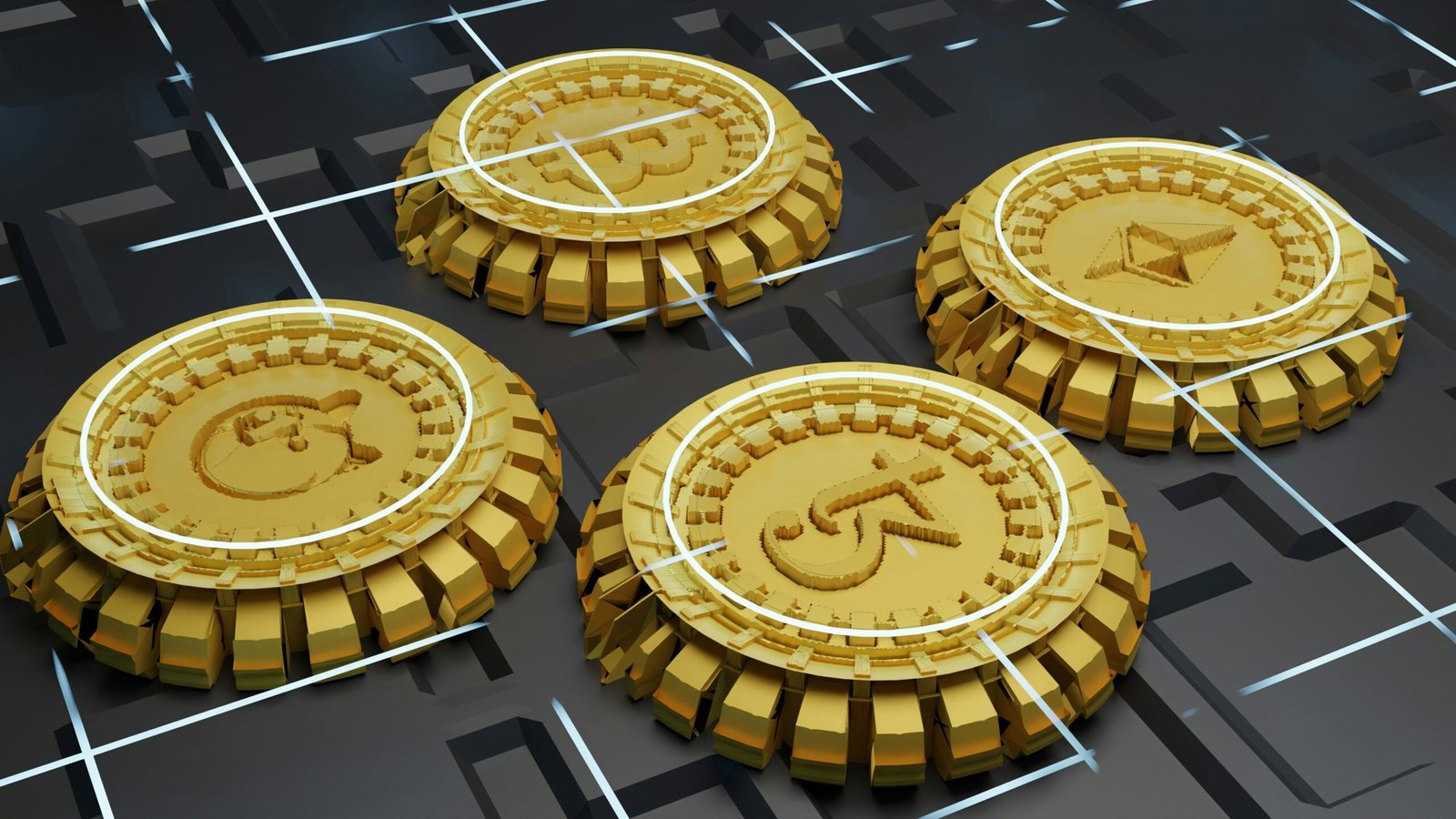DIY Guide to Building a Decentralized App
Decentralized applications, commonly known as DApps, represent a significant shift from traditional centralized applications. Unlike conventional apps that operate on a centralized server, DApps are built on a decentralized network, often utilizing blockchain technology. This fundamental difference in architecture brings about numerous benefits, which are fueling the growing interest and adoption of DApps across various industries.
One of the primary advantages of decentralization is enhanced security. In a decentralized network, data is distributed across multiple nodes, making it substantially harder for malicious actors to compromise the system. This distributed nature also helps in reducing the risk of single points of failure, thereby increasing the overall robustness of the application.
Transparency is another key benefit of DApps. Since transactions and operations within a DApp are recorded on an immutable ledger, users can independently verify actions and outcomes, fostering trust and accountability. This transparency is particularly valuable in industries where trust is paramount, such as finance, supply chain management, and healthcare.
User ownership is also a crucial aspect of decentralized applications. In traditional apps, users often have limited control over their data and how it’s used. DApps, however, empower users by giving them greater ownership and control over their personal information and digital assets. This shift towards user-centric models is one of the driving forces behind the popularity of DApps.
To illustrate the potential of decentralized applications, consider some of the popular DApps currently in use. Platforms like Uniswap and Aave have revolutionized decentralized finance (DeFi) by enabling peer-to-peer trading and lending without intermediaries. Similarly, DApps like Cryptokitties and Decentraland are pushing the boundaries of gaming and virtual worlds, offering new, user-driven experiences that were previously unimaginable.
In summary, decentralized applications offer a transformative approach to building and using software, with enhanced security, transparency, and user ownership at their core. As the ecosystem continues to evolve, the possibilities for innovation within the realm of DApps are virtually limitless.
Understanding Blockchain Technology
At the core of decentralized applications (DApps) lies the fundamental technology known as blockchain. Blockchain operates as a distributed ledger that records transactions across multiple computers, known as nodes. These nodes work collectively to maintain the integrity and security of the blockchain. Each transaction is timestamped and linked to the previous one, forming a chain of blocks that is immutable and transparent.
A crucial aspect of blockchain technology is the consensus mechanism, which ensures that all nodes in the network agree on the validity of transactions. There are various consensus mechanisms, such as Proof of Work (PoW) and Proof of Stake (PoS). PoW requires participants to solve complex mathematical problems to validate transactions, while PoS involves validators staking a portion of their cryptocurrency to gain the right to validate transactions. These mechanisms are essential in preventing fraud and ensuring the decentralized nature of the blockchain.
Smart contracts are another pivotal feature of blockchain technology. These are self-executing contracts with the terms of the agreement directly written into code. Smart contracts automatically enforce and execute the terms when predefined conditions are met, eliminating the need for intermediaries and reducing the potential for human error. They play a vital role in the functionality of DApps, enabling automated, trustless interactions.
Different types of blockchains cater to varying needs in DApp development. Public blockchains, such as Ethereum and Bitcoin, are open to anyone and offer high levels of decentralization and security. Private blockchains, on the other hand, are restricted to specific participants, providing greater control and confidentiality. Consortium blockchains fall somewhere in between, with a group of organizations managing the network collaboratively. Each type of blockchain has its own advantages and use cases, depending on the requirements of the DApp being developed.
In essence, blockchain technology is the backbone of DApps, offering a secure, transparent, and decentralized framework. Understanding its components—nodes, consensus mechanisms, and smart contracts—as well as the different types of blockchains, is crucial for anyone looking to delve into DApp development.
Choosing the Right Blockchain Platform
When embarking on the journey to build a decentralized app (DApp), selecting the appropriate blockchain platform is a critical decision. The choice of platform can significantly impact your DApp’s performance, scalability, and overall success. Several popular blockchain platforms are available, each with unique features, strengths, and weaknesses. Among these, Ethereum, Binance Smart Chain (BSC), and Polkadot are prominent options.
Ethereum is often the go-to choice for developers due to its established presence and robust ecosystem. It boasts a large developer community, extensive documentation, and numerous tools that facilitate DApp development. However, Ethereum’s popularity comes with drawbacks, such as high gas fees and scalability issues, primarily due to its proof-of-work consensus mechanism. The upcoming transition to Ethereum 2.0 aims to address these concerns by shifting to a proof-of-stake model, which promises improved scalability and reduced costs.
Binance Smart Chain, on the other hand, offers a more cost-effective alternative to Ethereum. It utilizes a dual-chain architecture, allowing users to build decentralized apps and digital assets on one blockchain while taking advantage of the fast trading services of the other. BSC provides lower transaction fees and faster block times, making it an attractive option for developers seeking efficiency and cost savings. However, it has a smaller developer community compared to Ethereum, which may limit access to certain resources and support.
Polkadot stands out with its interoperability feature, enabling different blockchains to interconnect and share information seamlessly. This capability allows developers to build more flexible and scalable DApps. Polkadot’s unique sharding mechanism, known as parachains, ensures efficient transaction processing and enhanced scalability. However, the platform’s complexity might present a steep learning curve for new developers, and its relatively nascent ecosystem may lack the maturity of Ethereum’s.
When choosing the right blockchain platform for your DApp, consider factors such as scalability, transaction costs, developer community, and ecosystem support. Evaluate your project’s specific requirements and long-term goals. Engaging with the developer communities, experimenting with test networks, and staying updated on platform advancements can provide valuable insights, helping you make an informed decision.
Setting Up the Development Environment
Embarking on the journey of building a decentralized application (DApp) necessitates a well-structured development environment. This section provides a comprehensive guide to setting up the essential tools and software required for DApp development. The focus here is to ensure that you have all the necessary components to efficiently create and deploy your DApp.
First and foremost, an Integrated Development Environment (IDE) is pivotal for coding and debugging. Visual Studio Code is a popular choice due to its extensive support for various programming languages and a plethora of extensions tailored for blockchain development. Ensure you have installed Visual Studio Code or any other preferred IDE before proceeding.
A critical component of your development environment is a blockchain client. For Ethereum-based DApps, Geth (Go Ethereum) or Parity are commonly used. These clients allow you to run a full node, enabling you to interact directly with the blockchain. To get started, download and install the appropriate client from their official websites. Follow the installation instructions provided to configure your node correctly.
Another indispensable tool is a cryptocurrency wallet, such as MetaMask or MyEtherWallet. These wallets serve as a bridge between your DApp and the blockchain. MetaMask, a browser extension wallet, is particularly user-friendly and integrates seamlessly with various development frameworks. Install MetaMask from the Chrome web store and set up your wallet by following the on-screen instructions.
Additionally, having a solid grasp of programming languages like Solidity for smart contract development and JavaScript for frontend integration is essential. Familiarity with these languages will streamline the development process and facilitate smoother troubleshooting.
To further simplify DApp development, several frameworks and libraries are available. Truffle Suite, for instance, provides a robust development environment, testing framework, and asset pipeline. Similarly, OpenZeppelin offers reusable and secure smart contract libraries, enhancing the security and reliability of your DApp.
In summary, setting up a development environment for building a DApp involves installing a suitable IDE, configuring a blockchain client, setting up a cryptocurrency wallet, and leveraging development frameworks. By ensuring these tools are correctly installed and configured, you lay a strong foundation for a successful DApp development project.
Smart Contract Development
Smart contracts are self-executing contracts with the terms of the agreement directly written into code. These contracts are a pivotal aspect of decentralized applications (DApps) as they facilitate, verify, and enforce the negotiation or performance of a contract without the need for intermediaries. Typically, smart contracts are deployed on blockchain platforms like Ethereum, utilizing languages such as Solidity.
To begin developing a smart contract, a rudimentary understanding of Solidity is essential. Solidity is a statically-typed programming language designed for developing smart contracts that run on the Ethereum Virtual Machine (EVM). Below is a basic example of a Solidity contract:
// SPDX-License-Identifier: MITpragma solidity ^0.8.0;contract SimpleStorage {uint256 private storedData;function set(uint256 x) public {storedData = x;}function get() public view returns (uint256) {return storedData;}}In this example, SimpleStorage is a basic smart contract that allows users to store and retrieve a single unsigned integer. The set function updates the stored value, while the get function retrieves it.
After writing the contract, it is crucial to test it thoroughly. Testing ensures that the contract functions as expected and helps identify any potential security vulnerabilities. Tools such as Truffle, Hardhat, and Remix IDE are commonly used for testing and deploying smart contracts. For instance, using Remix IDE, one can instantly compile and deploy the contract to a local or test network.
Security is paramount in smart contract development. Some best practices include:
- Conducting rigorous code reviews and audits.
- Implementing appropriate access controls to sensitive functions.
- Using well-established libraries like OpenZeppelin to avoid reinventing the wheel.
- Regularly updating contracts to patch any discovered vulnerabilities.
Common functions in smart contracts include token transfers, voting mechanisms, and data storage. For example, in a token contract, functions to transfer tokens between users and to check balances are fundamental.
By adhering to best practices and leveraging the available tools and libraries, developers can create robust, efficient, and secure smart contracts that serve as the backbone of their decentralized applications.
Building the Frontend
When it comes to developing the frontend of a decentralized application (DApp), the primary goal is to create a user interface (UI) that seamlessly interacts with the blockchain. This involves utilizing libraries such as web3.js or ethers.js, which facilitate communication between the frontend and the Ethereum blockchain. These libraries allow the frontend to read from and write to smart contracts, providing the necessary functionality for user interactions.
To start, you need to choose a frontend framework. Popular choices include React and Angular, both of which offer robust ecosystems and extensive community support. React, in particular, is favored for its component-based architecture, which simplifies the development of complex UIs. Once you have your framework set up, you can integrate web3.js or ethers.js to enable blockchain interactions.
For example, in a React application, you can install web3.js using npm:
npm install web3Next, you can import web3.js and configure it to connect to the Ethereum network:
import Web3 from 'web3';const web3 = new Web3(Web3.givenProvider || 'http://localhost:8545');This snippet sets up a connection to the Ethereum network, either through the user’s browser (if they have a wallet like MetaMask installed) or a local Ethereum node. With this setup, you can now interact with smart contracts from the frontend.
Consider a basic example where the frontend needs to call a function from a deployed smart contract. First, you need the contract’s ABI (Application Binary Interface) and its address:
const contractABI = [/* ABI array */];const contractAddress = '0xYourContractAddress';const contract = new web3.eth.Contract(contractABI, contractAddress);Now, you can invoke contract methods, handle user inputs, and update the UI accordingly. For instance, to call a read function from the contract:
contract.methods.yourFunction().call().then(result => {console.log(result);}).catch(error => {console.error(error);});In addition to technical integration, the importance of user experience (UX) design cannot be overstated. A well-designed UX ensures that users can easily navigate the DApp and understand how to perform various actions, such as connecting their wallets, sending transactions, and viewing transaction statuses. Clear instructions, feedback mechanisms, and error handling are crucial elements that contribute to a positive user experience.
By focusing on both the technical aspects of integrating blockchain interactions and the principles of good UX design, you can create a frontend for your DApp that is both functional and user-friendly.
Testing and Deployment
Thorough testing is a crucial step in the development of a decentralized application (DApp) to ensure it functions correctly and securely. This process involves several types of tests, each addressing different aspects of the application. Unit tests are the first line of defense, focusing on individual components or functions to verify their correctness in isolation. These tests help identify issues early in the development cycle, making debugging easier and more efficient.
Integration tests come next, aiming to ensure that different modules of the DApp work together seamlessly. These tests verify the interaction between smart contracts, the blockchain network, and any off-chain components. Integration tests are essential to check the flow of data and transactions within the DApp, ensuring that the combined functionalities operate without conflicts.
End-to-end tests provide a comprehensive evaluation of the entire DApp from the user’s perspective. These tests simulate real-world scenarios to validate the application’s behavior in a production-like environment. By covering the entire workflow, end-to-end tests help identify any issues that could affect the user experience, ensuring a smooth and reliable application.
Setting up a testing environment typically involves using testing frameworks and tools designed for blockchain applications. Popular frameworks like Truffle, Hardhat, and Ganache offer extensive support for writing and running tests. These tools provide features such as automated testing, local blockchain networks, and debugging capabilities, making the testing process more efficient and manageable.
Once the DApp passes all tests, the deployment phase begins. Deploying a DApp to a live blockchain network involves several considerations, including the selection of an appropriate network and managing gas fees. Public networks like Ethereum and Binance Smart Chain are popular choices, but developers may also opt for testnets to mitigate costs and risks during initial deployment stages. Gas fees, the cost of executing transactions on the blockchain, must be carefully managed to optimize deployment costs without compromising performance.
By following a structured approach to testing and deployment, developers can ensure their DApp is robust, secure, and ready for real-world use. This meticulous process not only enhances the application’s reliability but also builds user trust and confidence in the decentralized ecosystem.
Maintaining and Upgrading Your DApp
Once your decentralized application (DApp) is deployed, ongoing maintenance becomes a critical aspect to ensure its longevity and efficiency. Regular monitoring of performance metrics is essential to identify bottlenecks and optimize resource allocation. Tools such as Prometheus and Grafana can be instrumental in providing real-time insights into your DApp’s performance. Additionally, tracking user feedback through forums, surveys, or integrated feedback mechanisms can offer valuable information on user experience and potential areas for improvement.
Addressing security vulnerabilities is paramount in maintaining the integrity of your DApp. Regular security audits should be conducted to identify and mitigate risks. Utilizing platforms like MythX or OpenZeppelin’s security audit services can help uncover vulnerabilities in smart contracts. Promptly addressing these issues not only protects user data but also enhances trust in your DApp.
Upgrading smart contracts and other components without disrupting the user experience requires careful planning. One approach is to use proxy contracts, which allow you to separate the logic and data of your contracts. This way, you can upgrade the logic without altering the data storage, minimizing disruption. Another strategy is to implement a phased rollout of updates, allowing users to transition gradually and reducing the risk of widespread issues.
Staying informed about updates in blockchain technology is crucial for continuous improvement. Engaging with the developer community through conferences, webinars, and online forums can provide insights into emerging best practices and innovations. Regularly reviewing documentation and release notes from blockchain platforms such as Ethereum or Binance Smart Chain ensures that your DApp leverages the latest features and security enhancements.
Incorporating these strategies into your maintenance routine will help ensure your DApp remains robust, secure, and user-friendly over time. By proactively monitoring performance, addressing security vulnerabilities, and staying abreast of technological advancements, you can foster a sustainable and successful decentralized application.






